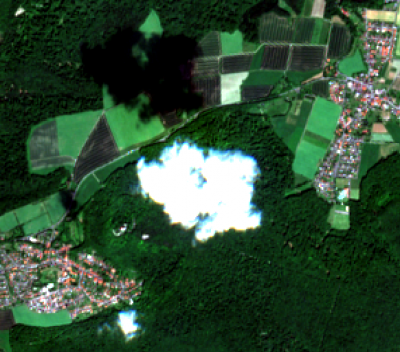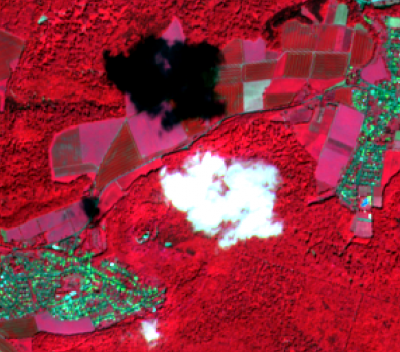Cloud masking
From AWF-Wiki
(Difference between revisions)
(→Sentinel-2 cloud masking) |
(→Sentinel-2 cloud masking) |
||
| Line 4: | Line 4: | ||
# Load a multiband Sentinel-2 satellite image (Level 2-A product) [[Changing Raster Layer Style]] to display a true color and a false color composite. | # Load a multiband Sentinel-2 satellite image (Level 2-A product) [[Changing Raster Layer Style]] to display a true color and a false color composite. | ||
# Zoom in to a cloudy part of the image and compare the extent of cloud and cloud shadow in both composites. Which composite is better for displaying clouds? | # Zoom in to a cloudy part of the image and compare the extent of cloud and cloud shadow in both composites. Which composite is better for displaying clouds? | ||
| − | + | [[File:Qgis_cloud_tcc.png|400px]] [[File:Qgis_cloud_fcc.png|400px]] | |
[[Category:QGIS Tutorial]] | [[Category:QGIS Tutorial]] | ||
Revision as of 10:11, 12 November 2017
Sentinel-2 cloud masking
The exclusion of clouds and cloud shadow is an important processing step which is usually done in an early preprocessing stage. The Sentinel-2 products are annotated with Quality Indicators (QI_DATA). In the Level 2A product you may find a file in the folder QI_DATA with the extension _CLD_20m.jp2 (data type: 8bit unsigned integer, spatial resolution 20m) which might be used for masking clouds. The data range is from 0 for high confidence clear sky to 100 for high confidence cloudy (for more details see [L2A Product Definition Document]).
- Load a multiband Sentinel-2 satellite image (Level 2-A product) Changing Raster Layer Style to display a true color and a false color composite.
- Zoom in to a cloudy part of the image and compare the extent of cloud and cloud shadow in both composites. Which composite is better for displaying clouds?

